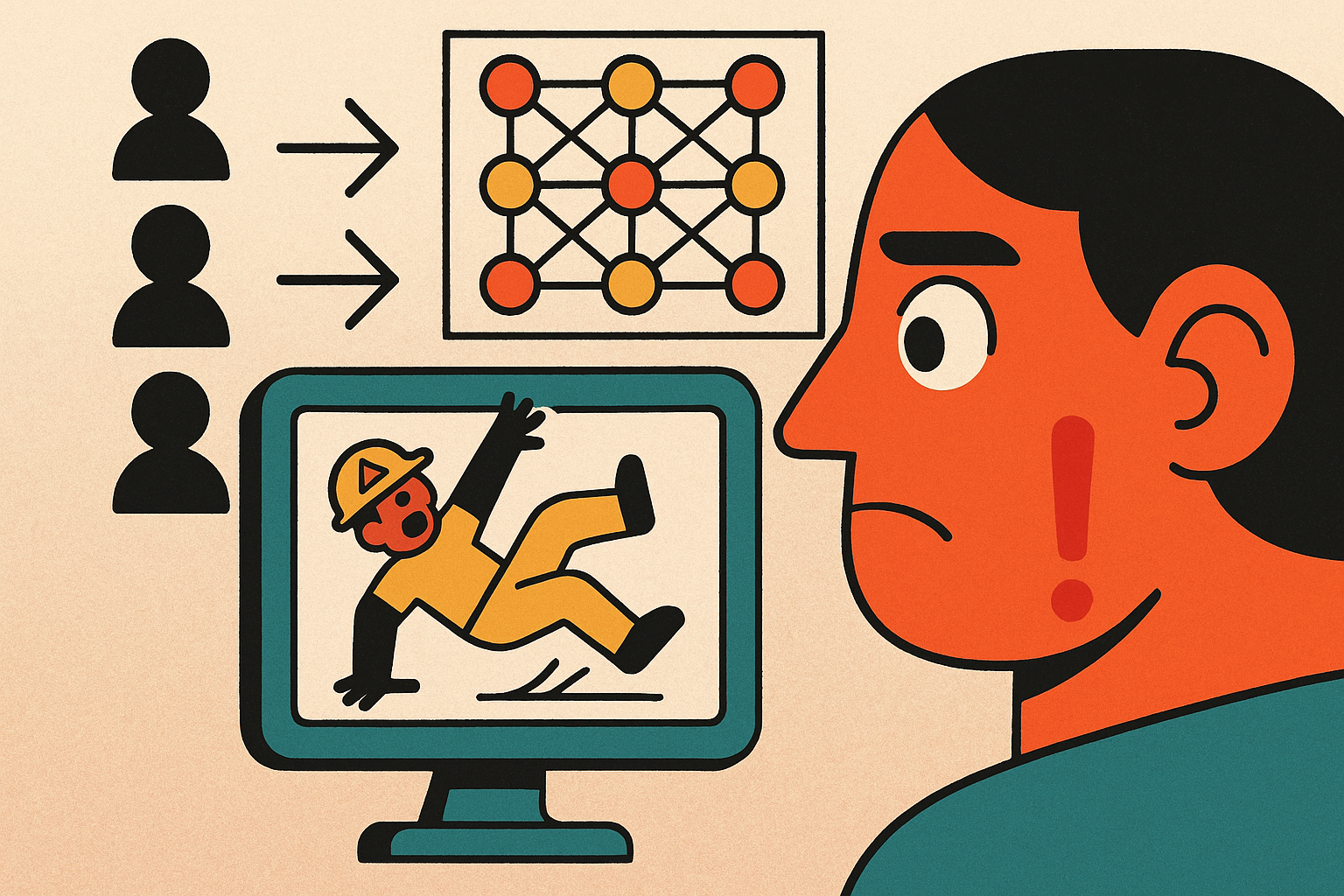Human Activity Recognition for Worker Safety
Teaching machines to tell the difference between a slip, trip, and fall using wearable sensor data

What I Built
A neural network classifier that analyzes 15-second accelerometer data from wearable safety devices to automatically detect workplace incidents. The system distinguishes between slips, trips, falls, and other activities - crucial for worker safety monitoring and emergency response.
The Challenge
This was an industry-sponsored project through Purdue's DataMine team. Our client had workers wearing safety devices that collected accelerometer data, but needed an automated way to classify incidents for faster emergency response and better safety analytics.
Working with 986,250 rows of raw sensor data - my first time handling this much real-world data. Each incident captured 375 acceleration measurements (25Hz over 15 seconds) in x, y, and z directions, triggered when acceleration exceeded 2Gs in any direction.
How I solved it
Feature Engineering Deep Dive: Transformed basic x,y,z accelerometer readings into 20+ meaningful
features.
Started with simple stats (mean, max, variance) but got creative with signal processing techniques like
Fourier transforms to capture movement patterns.
Neural Network Learning Curve: This was my introduction to deep learning, so I experimented with
both
traditional MLPs and CNNs. Had to learn everything from scratch - backpropagation, activation functions, the
whole nine yards.
Pattern Recognition: The tricky part was teaching the model that a "slip" has different
acceleration
signatures than a "trip" or "fall." Each type of incident creates distinct patterns in the sensor data.
Technical Breakthroughs
The biggest learning was understanding how time-series data works differently than typical classification problems. Had to think about temporal patterns, not just individual data points. Feature engineering was where the magic happened - raw accelerometer values don't mean much, but when you extract the right statistical and frequency-domain features, the patterns become clear.
Results and Impact
Achieved 74% precision in classifying workplace incidents, which was a solid improvement for this type of safety-critical application. More importantly, this could mean faster emergency response times and better workplace safety insights for the client.
Technologies Used: Python, Neural Networks (MLP), CNNs, signal processing, pandas, scikit-learn
Academic project at Purdue University, 2021